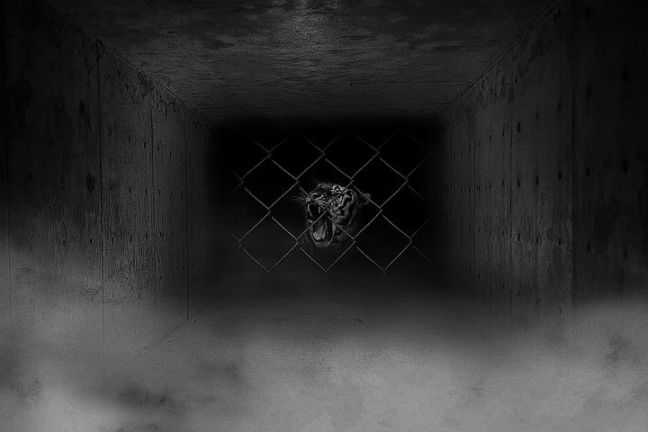Several days ago, a tiger was spotted near I-75 just outside of Atlanta. I can only imagine the initial reaction of the 911 center when the first call came through early that morning –
“911. What’s your emergency.”
“Uh, yeah. There’s a tiger walking down my street.”
“Did you say a tiger, sir?” the operator responds, trying to maintain professionalism and keeping the incredulousness out of her voice.
“Yes. A tiger.”
Hours later, a woman was alerted to something by the sharp barks of her dog outside in the yard and the sudden illumination of her kitchen from the headlights of the police cars. The timing was serendipitous; just as the great cat snatched the small dog in its jaws, the police fired upon the tiger. The dog was fine. The cat, unfortunately, had to be killed. With the city beginning to stir and children heading to their bus stops soon, it was simply too dangerous to wait for the team with the tranquilizers darts to arrive on scene.
It wasn’t until later that night that the full story came out. The tiger was part of a circus convoy driving to Tennessee. Somehow, it managed to escape the trailer while it was parked overnight and it decided to explore the wilds of central Georgia.
This story made me think about the life of that female tiger. I don’t know if she was born in captivity or captured as a cub, but I do know that she spent years in captivity. In some ways, her life as a kept animal was easier than that in the wild – she never had to face hunger, she didn’t have to work too hard for food and any injuries or illness would be quickly attended to.
And like all animals accustomed to captivity, I’m sure she adapted. Over time, those natural instincts to hunt and wait and fight for food would begin to soften. Her nose, no longer needed for survival, would become lazy. And her ability to endure the hardships would weaken as she grew comfortable in her limited and unchallenging world.
After only a brief period in captivity, many wild animals are deemed, “not suitable for release.” They have become too soft, too complacent to make it out in the real world with its fights and its famines. They no longer know how to hunt. They have forgotten how to interact with the group. They have lost the drive and the grit to survive.
Much the same can happen to us. When we’re held in environments that both constrain us and overly care for us, we can become soft. Forgetful of how to be hungry and fearful of struggle. Like the captive animals, we become accustomed to things being easy and we can flounder when circumstances become more difficult.
There’s a lesson here, one of which I’m always cognizant of in the classroom, when we try to make things too easy, to remove all of the discomfort, we are teaching our children and ourselves to be dependent, not suitable for release. I’ve never been a fan of “no pain, no gain,” but I’m a big believer in the idea that struggle is what makes us strong. There’s a huge span between comfortable and pain. And that’s where the growth happens.
However, all that being said,



Thank you Lisa! An empowering post!